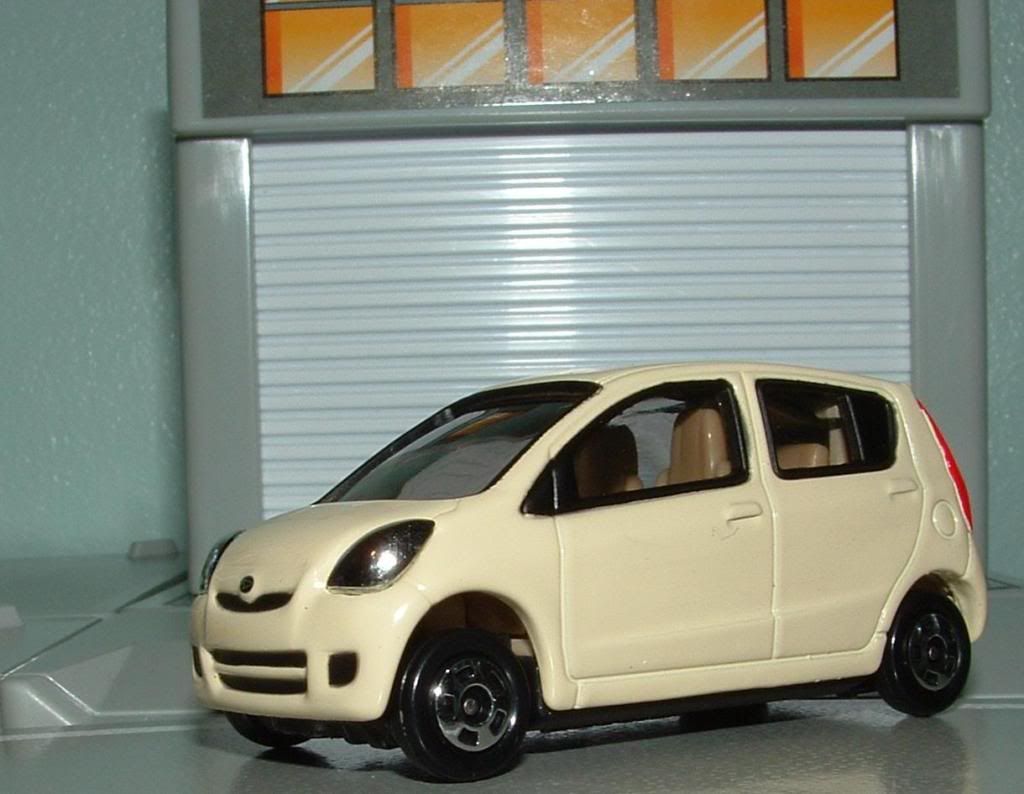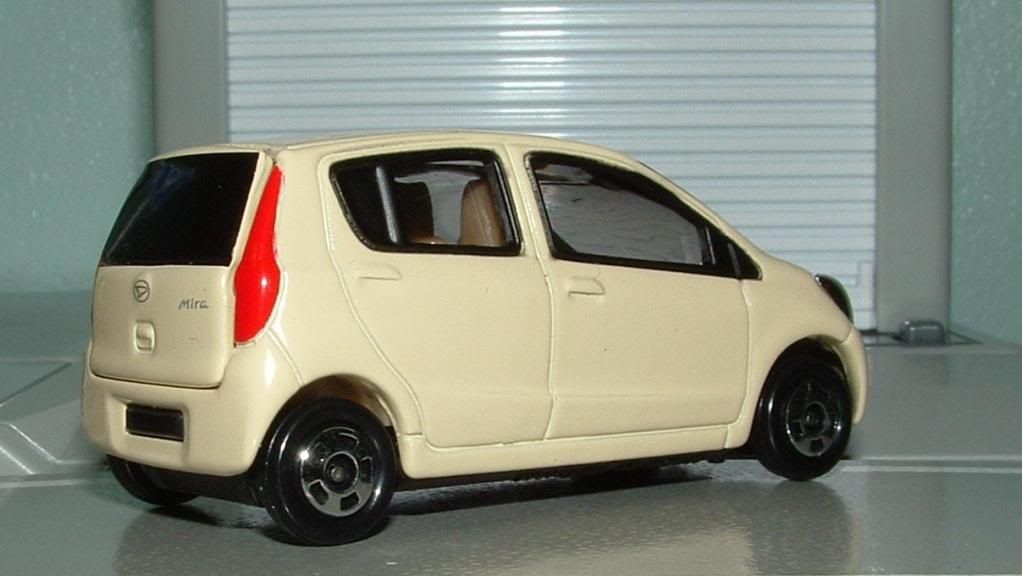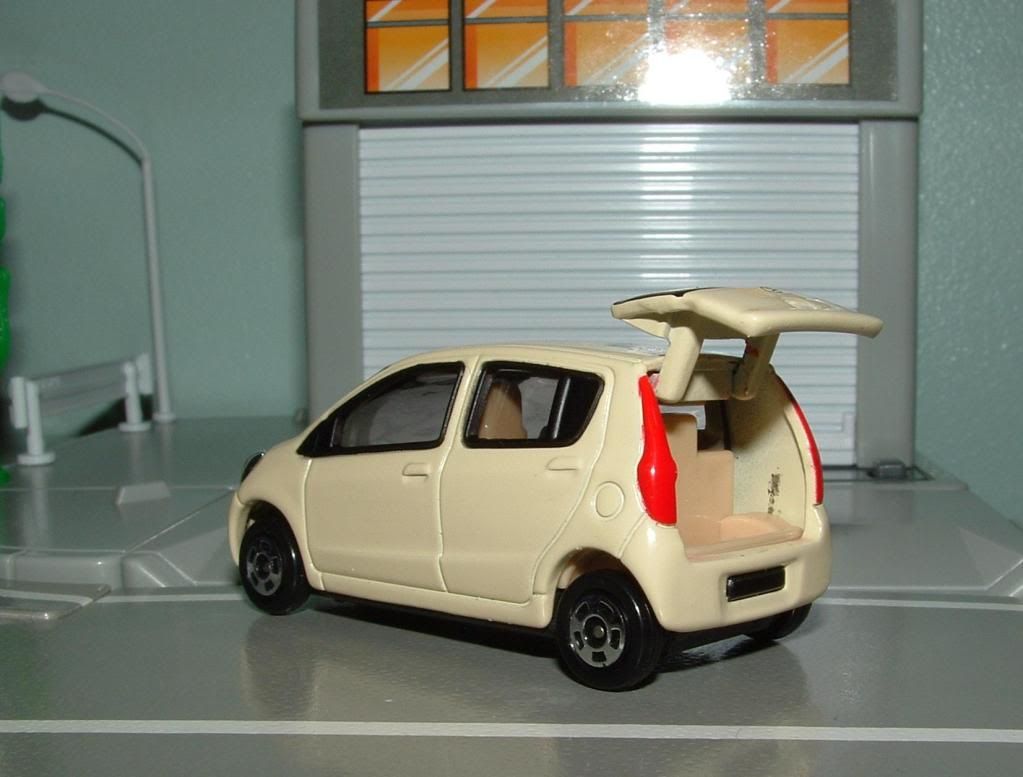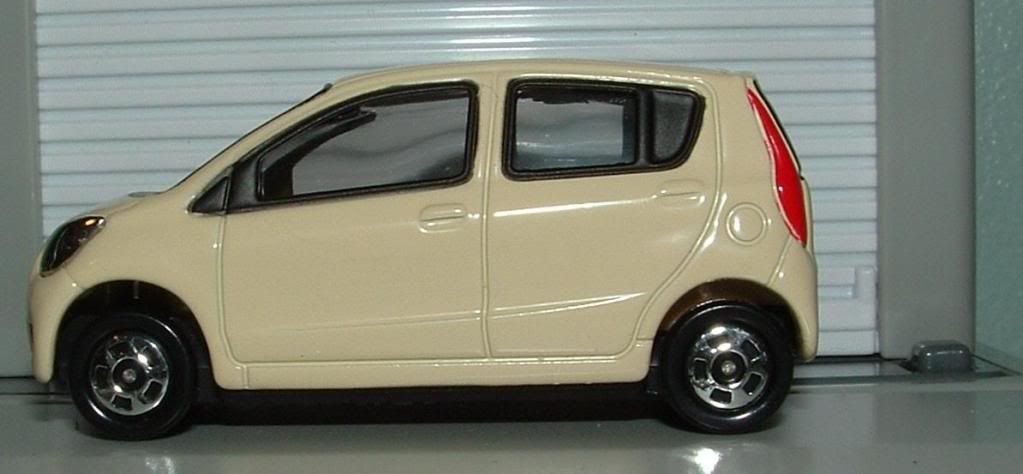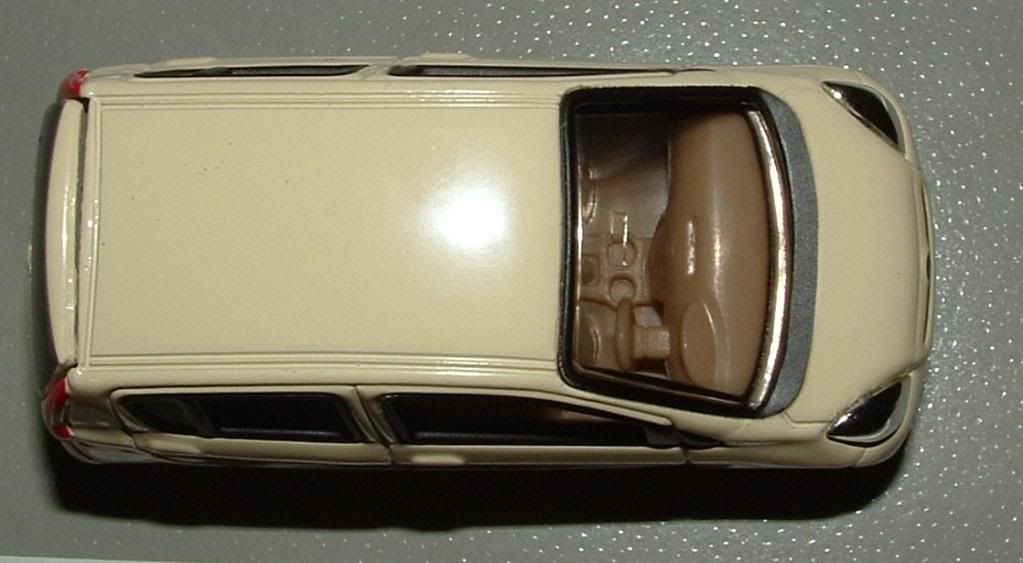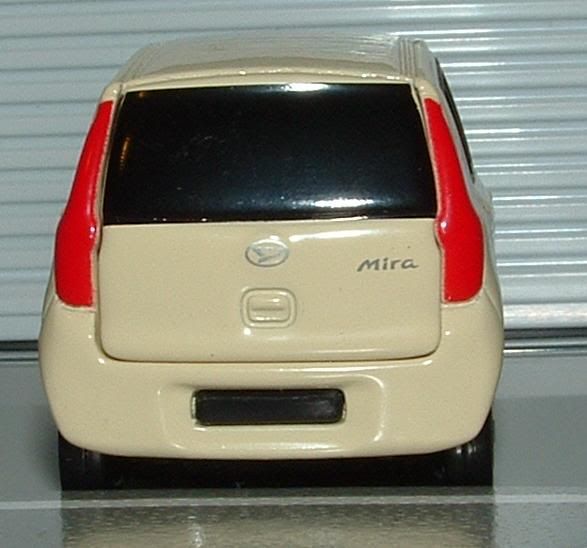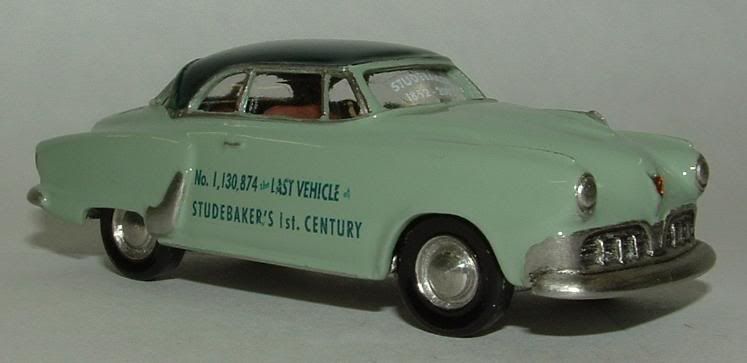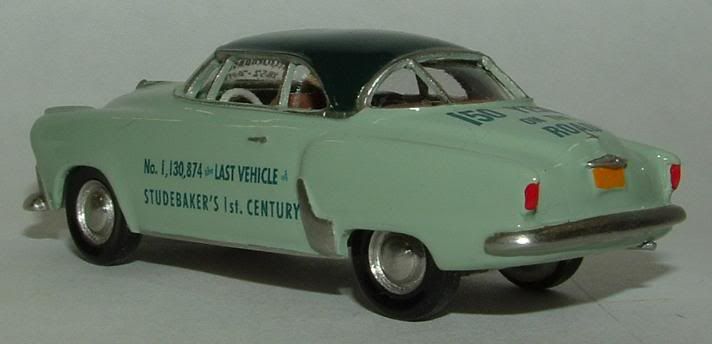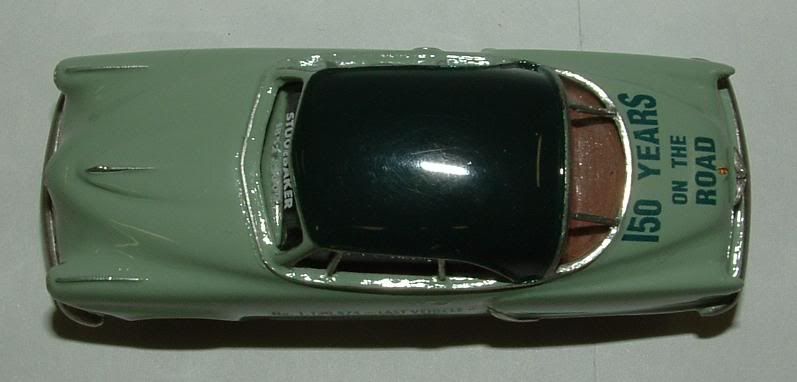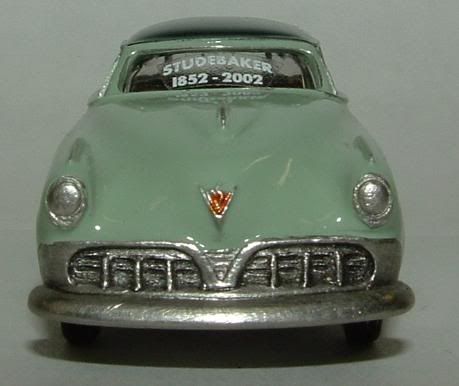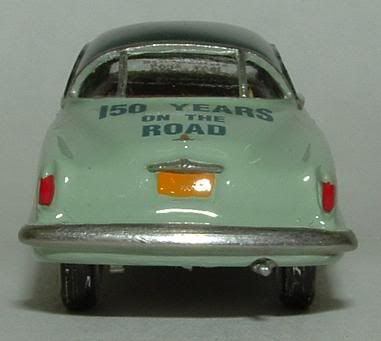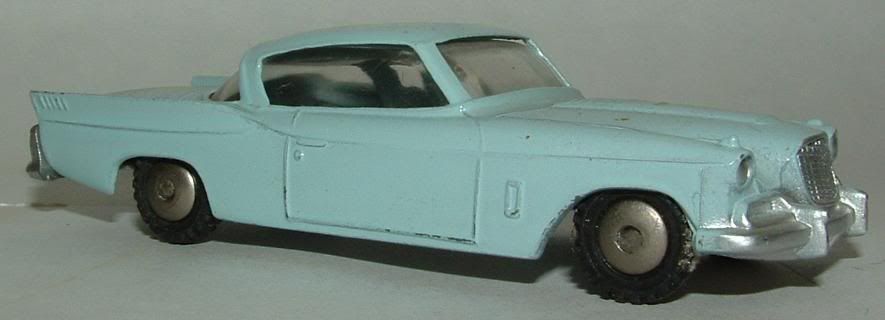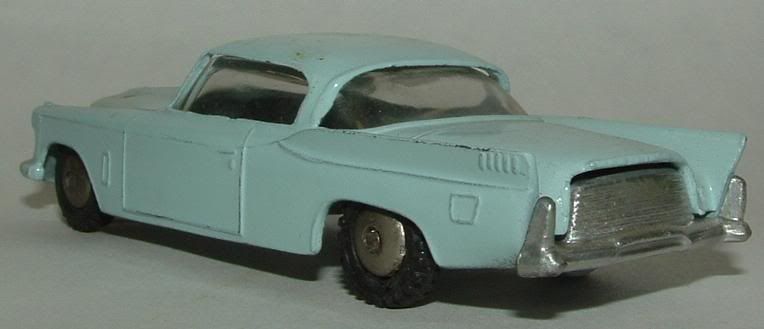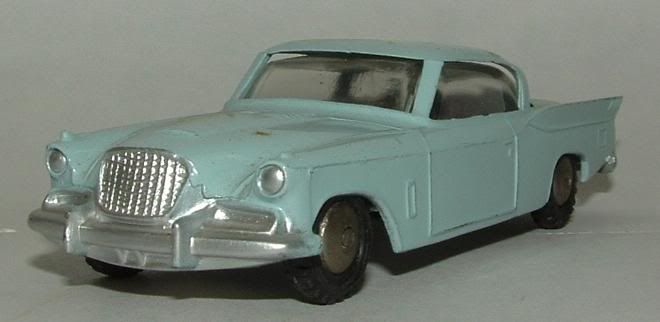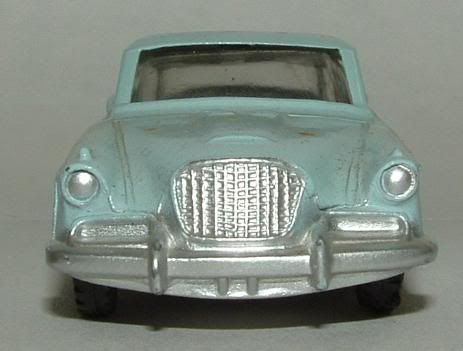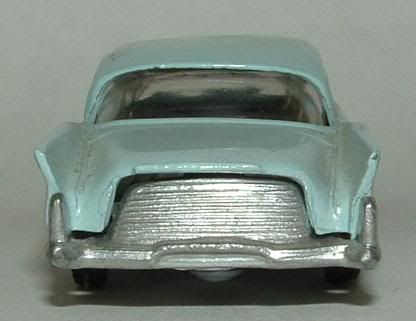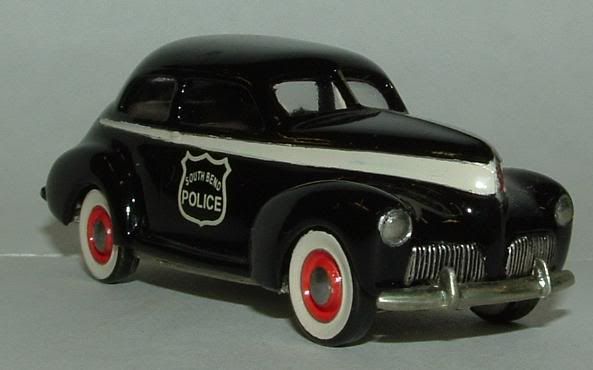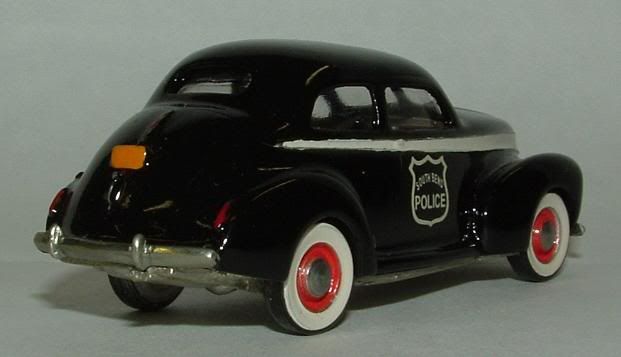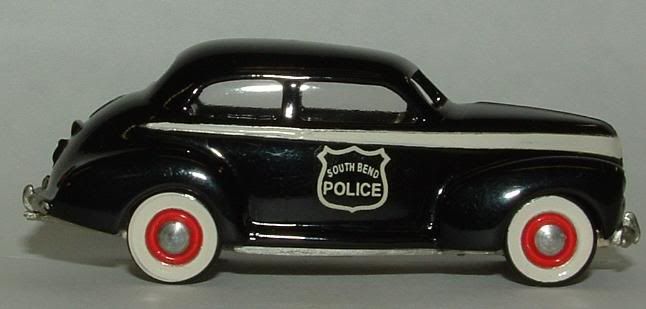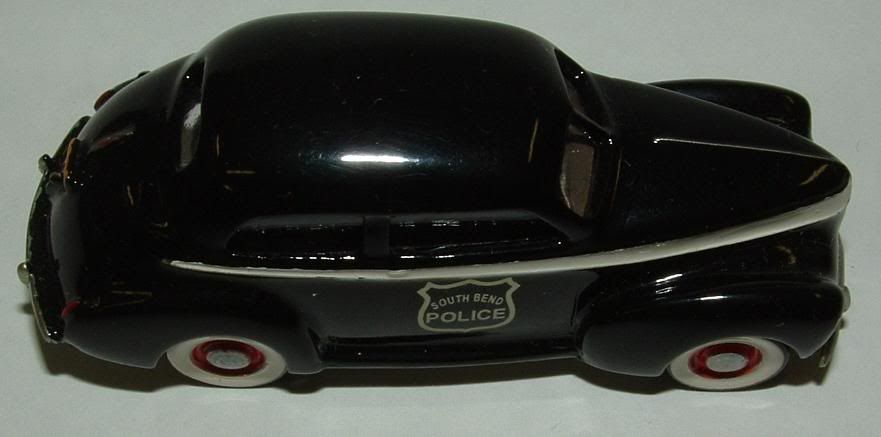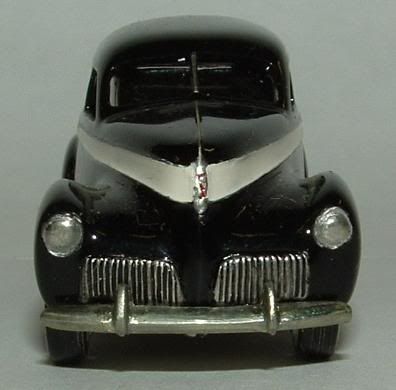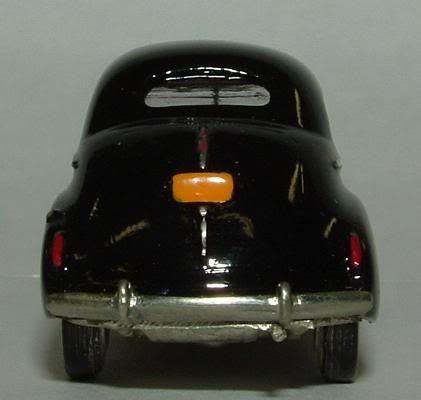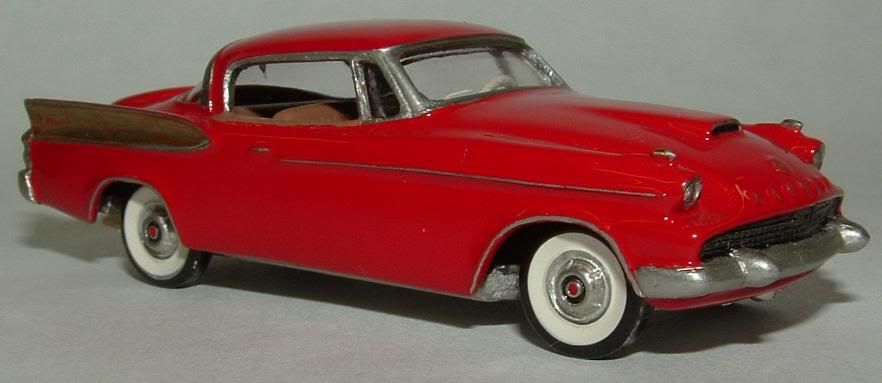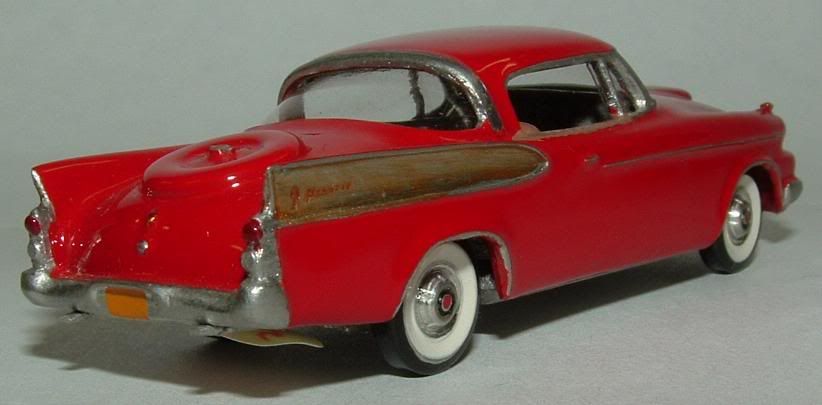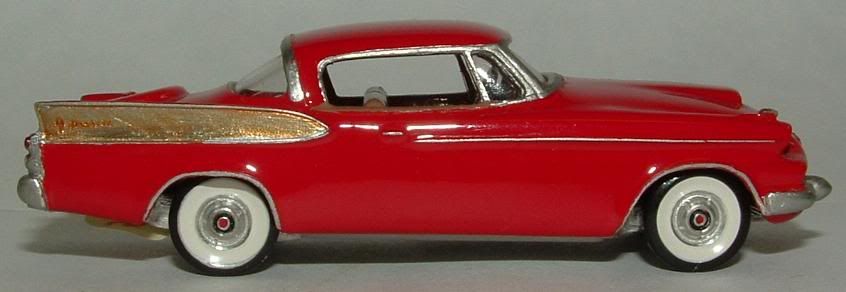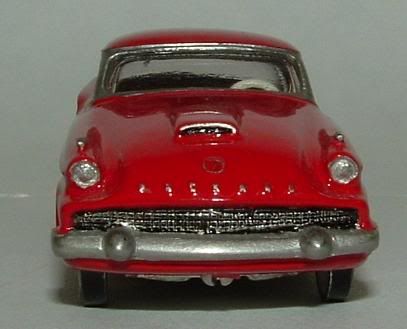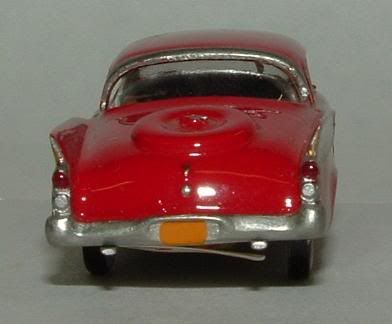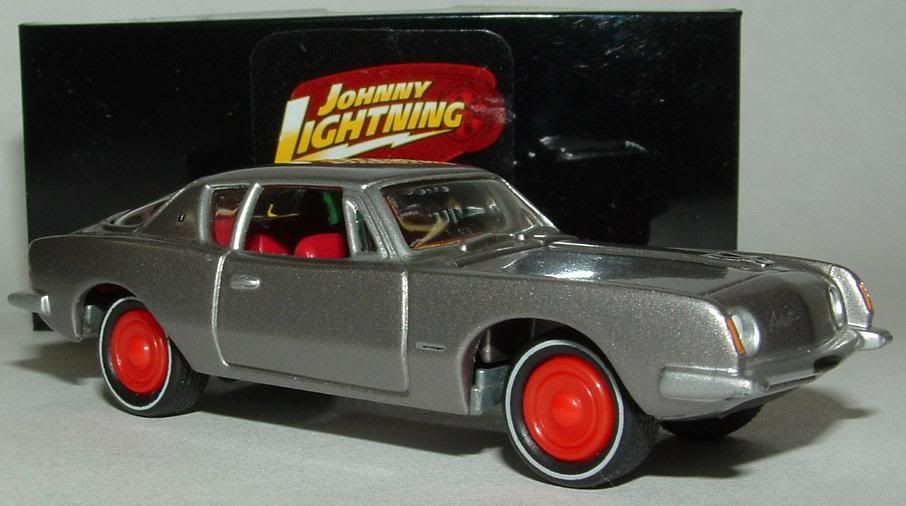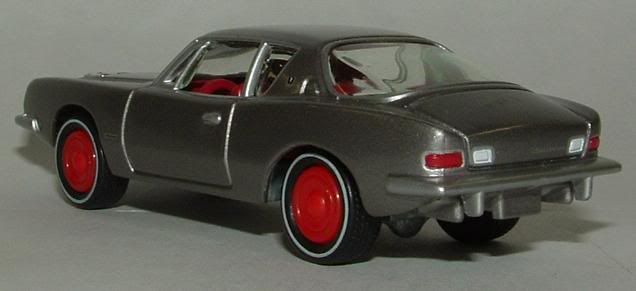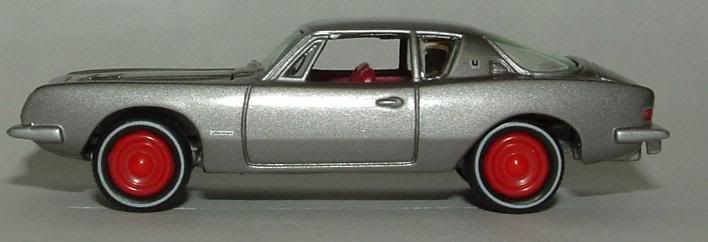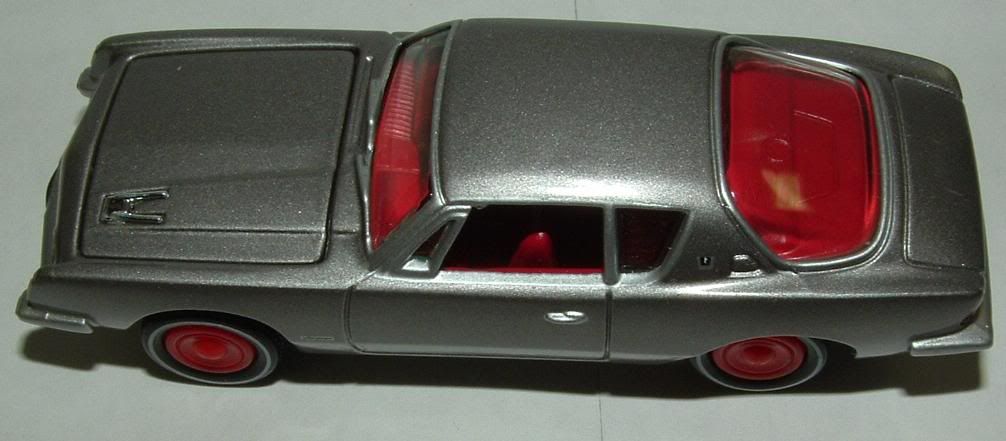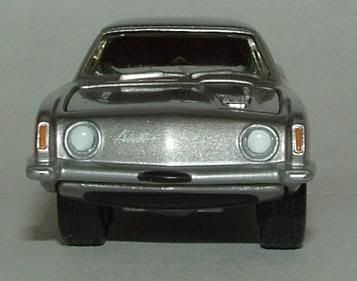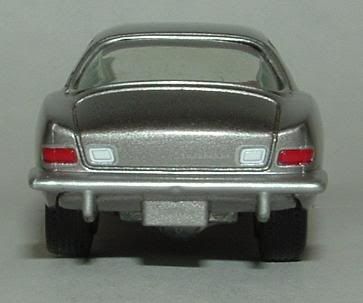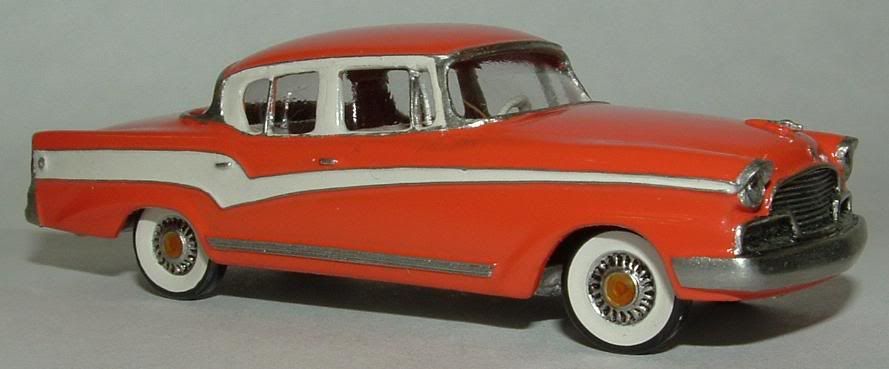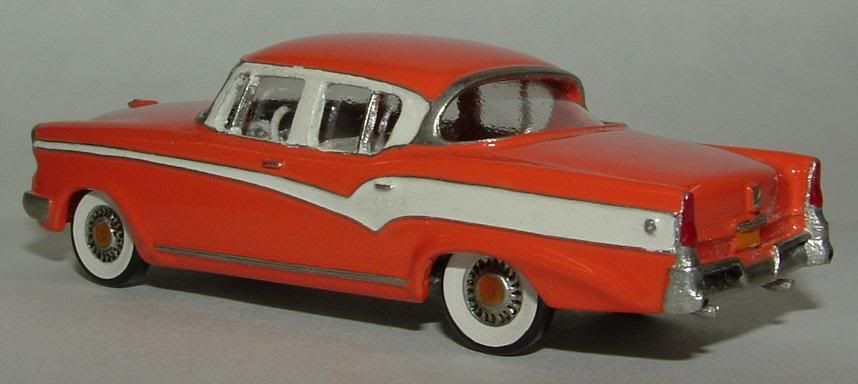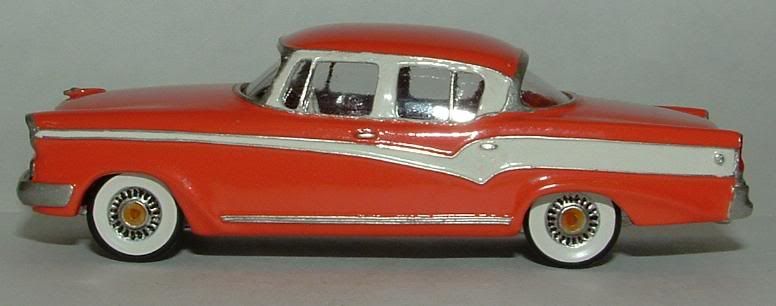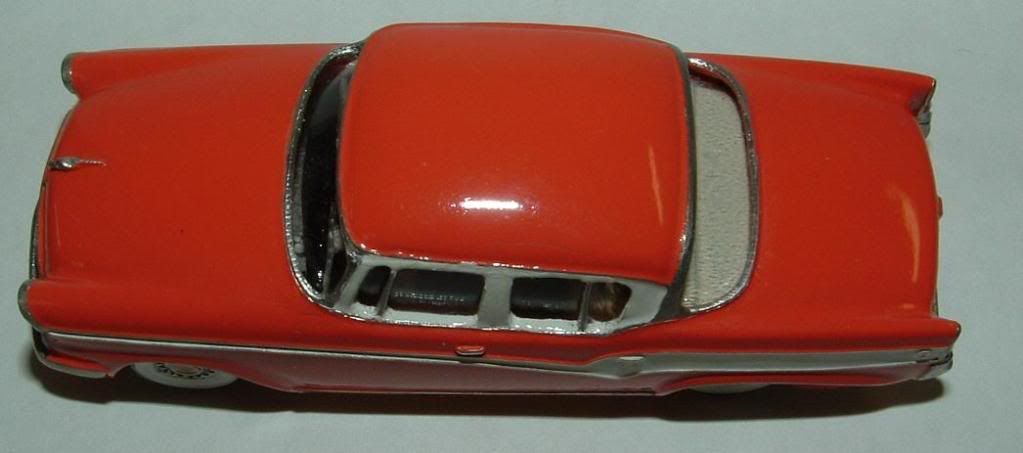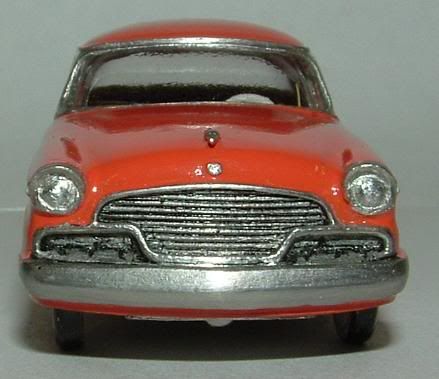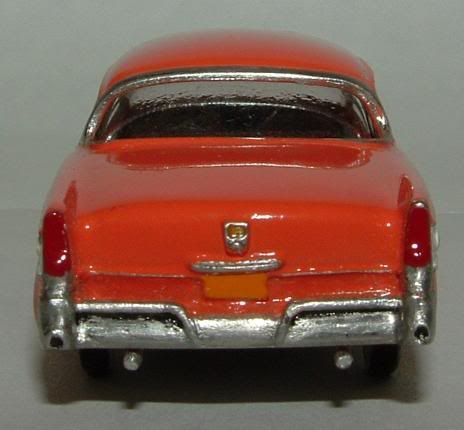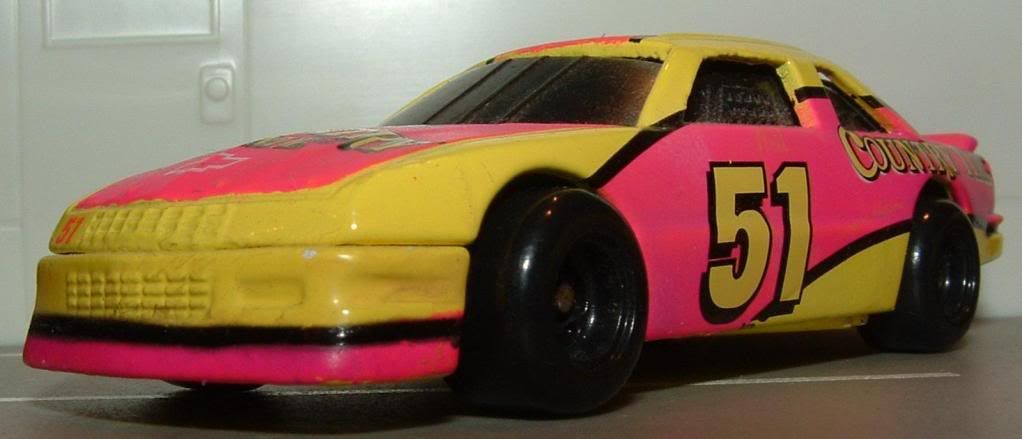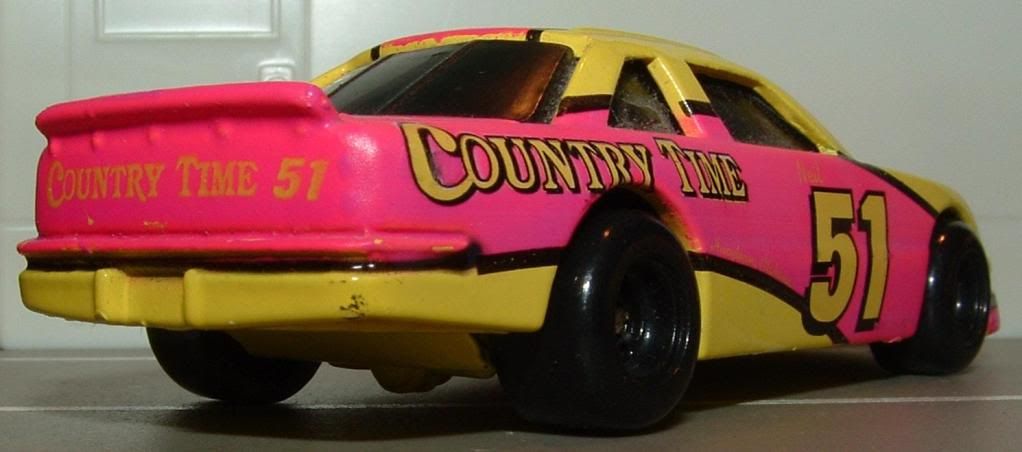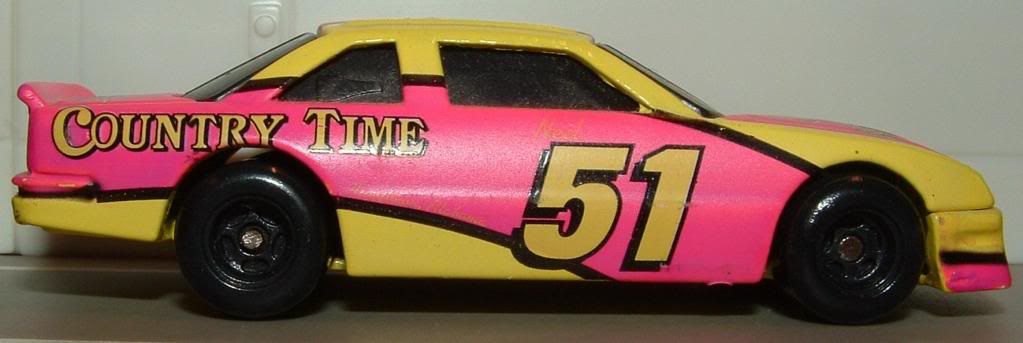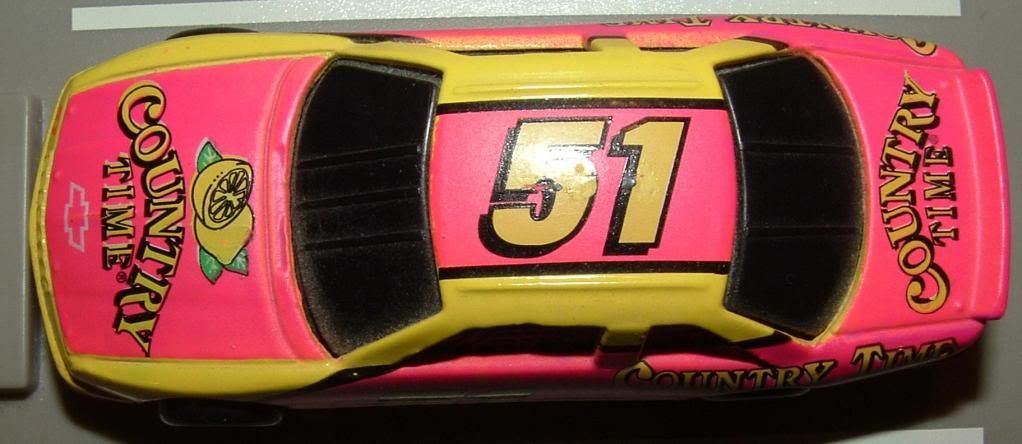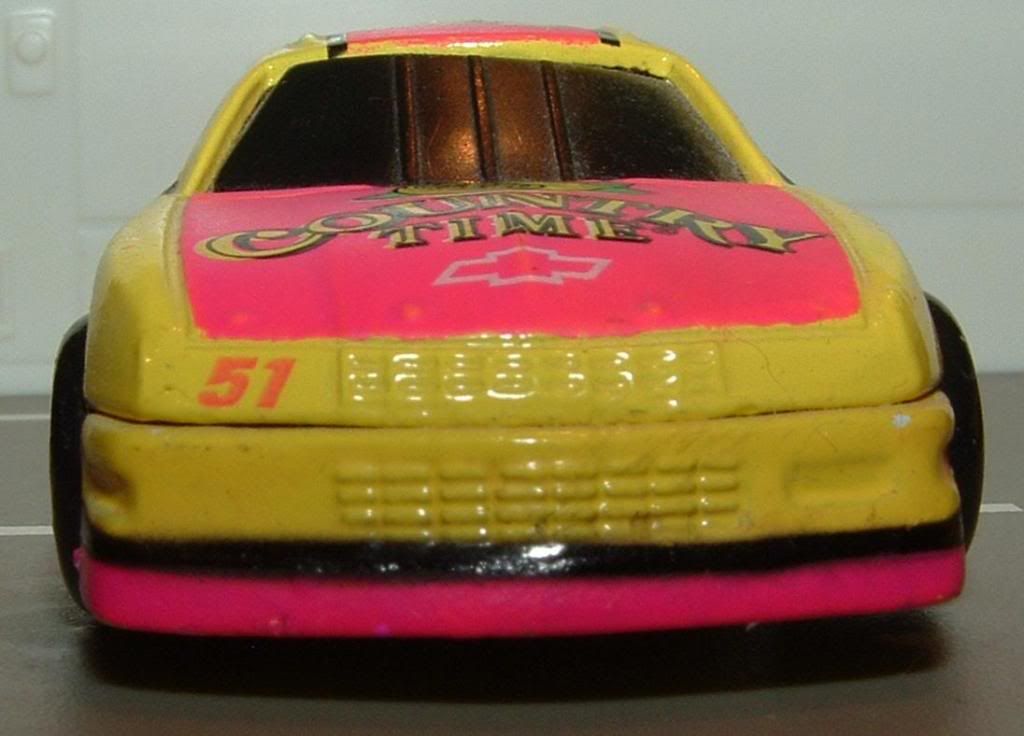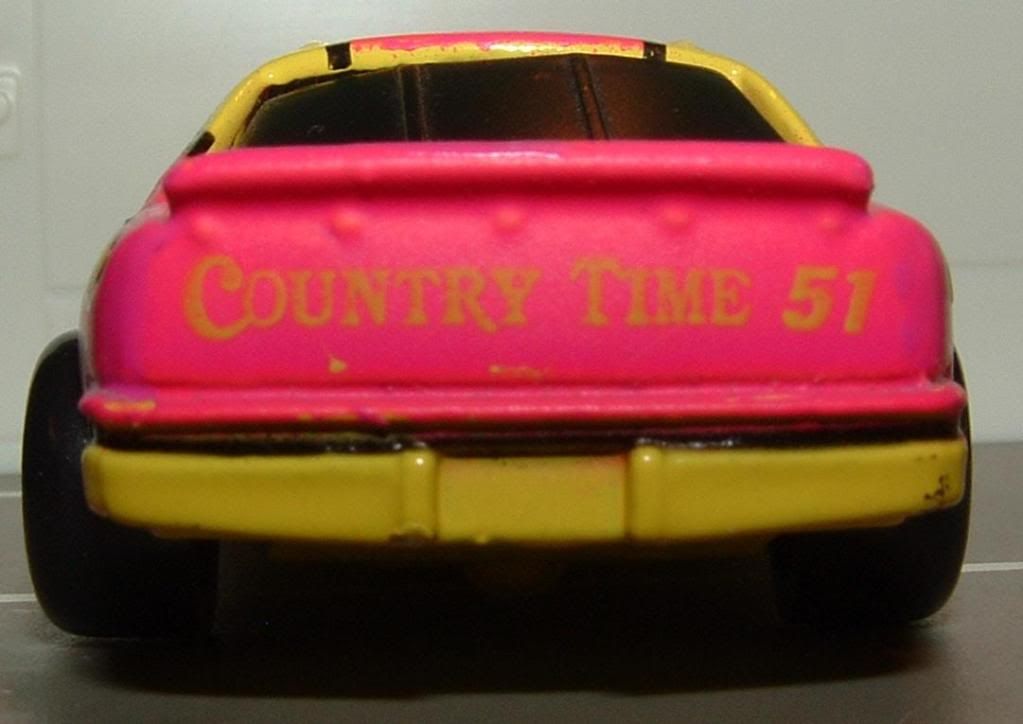
A blog focusing on 1/64 diecast from such popular brands as Hot Wheels, Matchbox, Johnny Lightning, M2 Machines, GreenLight, Tomica, Yat Ming, Majorette, MotorMax, Siku, Corgi, Guisval, Playart, Ertl, Zylmex, Racing Champions, & many more. Swifty's Garage features a daily Car Of The Day and news updates from your favorite brands!
Sunday, February 20, 2011
Car Of The Day: February 20, 2011
Today's car of the day is Tomica's 2006 Daihatsu Mira
The Daihatsu Mira (also known as the Cuore, Domino, and more recently Charade), is a kei car-type vehicle built by the Japanese car maker Daihatsu. It comes with a variety of options and chassis variations, with the latest variant having four models: "Mira", "Mira AVY", "Mira Gino" and "Mira VAN". The Mira is the latest successor to the line of cars begun with the Daihatsu Fellow of 1966 and was originally introduced as the commercial version of the Cuore. Outside of Japan, the Mira has also been offered with an 850 cc engine. In Australia, the two-seater version was known as the Handivan and was later renamed as just Handi.
For more information and pictures of the real car please visit: Daihatsu Mira
Here's a recent purchase from my day out with bunkerjim a few weeks ago. We went around to all the stores (K-Mart, Walmart, Target, and Toys R Us) and managed to come away with some very nice cars.
The L251 Mira, unrelated to the earlier 200-series, is the most recent generation of the car. The car is produced as the Mira in Japan. The L251 platform was also shared with the most recent version of the Daihatsu Charade in the United Kingdom. Elsewhere this was badged and sold as the Cuore.
The set this one comes with serves as the background for the images. I really like the corrugated garage door- it works well and looks nice.
Saturday, February 19, 2011
Car Of The Day: February 19, 2011
Today's car of the day comes from Bruce Slifer's collection and is Shrock Brothers' 1952 Studebaker Commander.
The Studebaker Commander is the model-name of a long succession of automobiles produced by the Studebaker Corporation of South Bend, Indiana (USA) and Studebaker of Canada Ltd of Walkerville and, later, Hamilton, Ontario (Canada). Studebaker began using the Commander name in 1927 and continued to use it until 1964, with the exception of 1936 and 1959-63. The model-name was applied to various positions in the company's product line-up from year to year.
For more information and pictures of the real car please visit: Studebaker Commander
And thus we end our Studebaker week with another Shrock Brothers piece. Four Shrocks in one week is abnormal- who knows how long it'll be before we see another one featured as Car Of The Day.
The 1950 Champion differed from the Commander, which had a distinctive bumper, carried over from 1949, longer front fenders and large headlight bezels, as well as a distinctive jet-style hood ornament.
In 1955, Studebaker reintroduced the President name for its premium models and 'Commander' was applied to the mid-range products. The Commander line was extended with the introduction of a lower-priced Custom sub-series, being basically a Champion with a V8 engine. Studebaker placed the name on hiatus at the end of the 1958 model year.
Friday, February 18, 2011
Car Of The Day: February 18, 2011
Today's car of the day comes from Bruce Slifer's collection and is Hubley's 1958 Studebaker Silver Hawk.
The Studebaker Silver Hawk was an automobile produced between 1957 and 1959 by the Studebaker Corporation of South Bend, Indiana. The Hawk was also produced in 1956. There were four versions, pillared Flight Hawk and Power Hawk, and hardtop Sky Hawk and Golden Hawk. The Silver Hawk model was not produced in 1956, the first year of the Hawks. The same basic car was produced for two more years (1960 and 1961) as simply the Studebaker Hawk, since from 1959 onward no other Hawk models were being sold.
For more information and pictures of the real car please visit: Studebaker Silver Hawk
Just when it was beginning to look like Studebaker week had turned into Shrock Brothers Studebaker week, here's a nice offering from Hubley. It's unique among the cars featured this week in that it was actually offered when the real car was in showrooms!
The Silver Hawk was the replacement for the two lower models in the four-model Hawk range in 1956, the Flight Hawk which carried the Champion 185 cu. in., six-cylinder 101 hp (75 kW) powerplant and the Power Hawk with the Commander's 259 in³ (4.2L) V8. Both of these models were two-door pillared coupes in the US market (based on the 1953 "Starlight" coupe body), and therefore, so was the Silver Hawk, which came in two differently-engined models with either the aforementioned Champion six or the 289 cu. in. (4.7L) President V8 engine (delivering 210 HP from the two-barrel, 225 HP from the four-barrel with dual exhaust). The Commander V8 was not offered in U.S. models; it was, however, the largest engine available in most overseas markets.
In appearance, the Silver Hawk was somewhat plainer in appearance than the Golden Hawk, the senior of the two Hawk models in 1957-58. There was a little bit less chrome, no supercharger or bulge in the hood, and a simpler two-tone paint scheme was adopted - simply one color below the chrome belt line and another above, but unlike the Golden Hawk, the lower color included the fin. Some dealers painted the fin only, and sometimes the deck lid recess and or the left and right "side grills" were painted in a contrasting Studebaker color. These usually matched the interior, some were Blue, Gold, Red or Black and were actually better looking according to many owners than the factory two-tone paint scheme.
In the midst of a financial crisis at Studebaker after a disastrous recession-year performance in 1958, the Golden Hawk was dropped; the Silver Hawk, which had sold somewhat better, was retained in the lineup.
For 1959, the Silver Hawk became the only Hawk model in production, largely because Studebaker dealers wanted a glamorous flagship model as a dealership draw. Those customers would more than likely walk out with Studebaker's last-ditch hope, the new Lark compact. In fact, the Silver Hawk was the only non-Lark model kept.
Changes for 1959 included new tailfins, with the "Silver Hawk" script moved to the fins instead of on the trunk lid (where new individual block letters spelling out STUDEBAKER were placed), with a new Hawk badge in between the two words. The parking lights moved to the side grilles from the front fenders, chrome moldings around the windows (from the '53-'54 models) similar to the Golden Hawk were added, and the interior was somewhere in between the two former models' levels of luxury. Two-tone paint was discontinued for all US orders, though it was still available for export.
Under the hood (at least for U.S. models), buyers could choose the newly-shrunken (to pre-'55 size) 90 HP 169.6 cu. in. (2.8L) six or the 259 cu. in. (4.2L) V8 of 180 or 195 HP (depending on the choice of carburetor). The 289 was no longer available.
The 1959 model year was Studebaker's first profitable year in six years, thanks mostly to the Lark, and the rising tide of sales lifted the Silver Hawk, which sold 7,788 examples.
For 1960, Studebaker dropped the Silver part of the name, leaving "just plain" Hawk. Largely unchanged externally from the '59, internally, the major change was the return of the 289 cubic inch (4.7 L) V8 last used in 1958. This was the only engine available for U.S. orders in both 1960 and 1961, the last year of the finned Hawk. Some 6-cylinder and 259 in³ (4.2 L) V8 models were built for export markets.
The 1961 models saw the limited return of a second paint color, beige, in a stripe along the base of the fin between the two lower moldings. Interiors gained the option of wide, comfortable bucket seats; customers could opt to team their 289 V8 with a new four-speed Borg-Warner manual transmission, the same model used in the Chevrolet Corvette.
The Hawk was replaced for 1962 by the stunningly-restyled (by Brooks Stevens) Studebaker Gran Turismo Hawk.
As can be seen in some of these pictures, this car suffers from something current Hot Wheels and Matchbox cars will not have to worry about- and that is a few spots of rust affecting what is otherwise a very mint survivor from the 1950s. Back then toys were built from metal, and intended to last. Too bad the same can not be said of the company itself (in this case, both Hubley and Studebaker).
Thursday, February 17, 2011
Car Of The Day: February 17, 2011
Today's car of the day comes from Bruce Slifer's collection and is Shrock Brothers' 1941 Studebaker Champion police car.
The Champion was an automobile of the Studebaker Corporation of South Bend, Indiana. Production for the model began at the beginning of the 1939 model year and continued until 1958, when the model was phased out in preparation for the 1959 Studebaker Lark. Prior to that time, Studebaker had been placed under receivership, and the company was trying to return to a profitable position.
Success of the Champion in 1939 was imperative to Studebaker’s survival following weak sales during the 1938 model year.
Unlike most other cars, the Champion was designed from a "clean sheet"; that is, having no restrictions caused by necessarily utilizing older parts or requiring the subsequent use of its components in heavier vehicles. Careful market research guided the selection of features, but a key principle adhered to was the engineering watchword "Weight is the enemy." For its size, it was one of the lightest cars of its era; its main competitor in this regard being the Willys Americar, which did not have so thoroughgoing a design process. And the engineering was good; its compact straight-6 engine was maintained to the end of the 1964 model year (with a change to an OHV design in 1961).
For more information and pictures of the real car please visit: Studebaker Champion
Another Shrock Brothers piece (not surprising considering their concentration on Studebakers), this one represents a South Bend, Indiana police cruiser from 1941. The same paint scheme is seen on Racing Champions' 1951 Studebaker police car. South Bend being the home of Studebaker, it should come as no surprise that the local squad cars were Studebakers.
The Champion was one of Studebaker's best-selling models by virtue of its low price (US$660 for the two-door business coupe in 1939), durable engine and styling. The car's ponton styling was authored by industrial designer Raymond Loewy who had been under contract with Studebaker for the design of their automobiles. Champions won Mobilgas economy runs by posting the highest gas mileage tests. During World War II, Champions were coveted for their high mileage in a time when gas was rationed in the United States. From 1943-1945, the Champion motor was used as the powerplant for the unique Studebaker M29 Weasel personnel and cargo carrier, which also used four sets of the Champion's leaf springs arranged transversely for its bogie suspension.
Studebaker Champion CommanderIn 1946, Studebaker built a limited number of cars based on their 1942 body shell in preparation of its new body and design roll out in 1947. All Studebakers built in 1946 were designated Skyway Champion models.
In 1957, the Champion Scotsman, a stripped down Champion, was introduced by Studebaker in an attempt to compete with the Big Three and Nash in the low price field. Shortly after its introduction, the car was redesignated the Studebaker Scotsman.
Wednesday, February 16, 2011
Car Of The Day: February 16, 2011
Today's car of the day comes from Bruce Slifer's collection and is Shrock Brothers' 1958 Packard Hawk.
The 1958 Packard Hawk was the sportiest of the four Packard-badged Studebakers produced in the final year of Packard production,. Packard's plant in Detroit, Michigan had been leased to Curtiss-Wright (and would be soon sold to them), and Packard models in this dying-gasp year were all rebadged and retrimmed Studebaker products. The 1958 Packard Hawk was essentially Studebaker's 1957 Golden Hawk 400 with a fibreglas front end and a modified deck lid.
Instead of the Studebaker Hawk's upright Mercedes-style grille, the Packard Hawk had a wide, low opening just above the front bumper and covering the whole width of the car. Above this, a smoothly sloping nose, and hood—reminiscent of the 1953 Studebakers, but with a bulge as on the Golden Hawk—accommodated the engine's McCulloch supercharger that gave the Studebaker 289 in³ (4.7 L) V8 a total of 275 bhp (205 kW). At the rear, the sides of the fins were coated in metallized PET film, giving them a shiny metallic gold appearance. A fake spare-tire bulge adorned the 1953-53-style Studebaker deck lid. 'PACKARD' was spelled out in capitals across the nose, with a gold 'Packard' emblem in script—along with a Hawk badge—on the trunk lid and fins.
The interior was full leather, with a fully instrumentation in an engine-turned dash. As on early aircraft and custom boats, padded armrests were mounted outside the windows, a rare touch.
For more information and pictures of the real car please visit: Packard Hawk
The only non-Studebaker to be featured this week, here we have the Studebaker-based Packard Hawk. The problem with Shrock Brothers cars is that you see them and you want them all, but purchasing one is a major decision, and I'm thinking that the next one to join my collection could be this one if there are any still available.
The styling was definitely controversial, often described as 'vacuum-cleaner' or 'catfish' by detractors. Interestingly, the styling has come to be appreciated more today than in its debut. Only 588 were sold, with Packard's impending demise a likely contributing factor. Most were equipped with the Borg-Warner three-speed automatic transmission. Approximately 28 were produced with the B-W T85 3-speed w/overdrive manual transmission. Studebaker-Packard was the first manufacturer to popularize the limited-slip differential, which they termed Twin-Traction. Most Packard Hawks came with TT. It was certainly the fastest Packard ever sold, since it shared the majority of its components with Studebaker's Golden Hawk. The price was $3995, about $700 higher than the Studebaker model, but with a more luxurious interior. Electric window-lifts and power seats were optional extras.
Its rarity and status as the best-regarded of the 'Packardbaker' final-year cars have made the Packard Hawk quite collectible. Values are roughly double those of the equivalent Studebaker, although they are still low by comparison with Corvettes and Thunderbirds. Because a Studebaker drivetrain was used, mechanical parts are more readily available, although body and trim parts are more difficult-to-impossible to find. While it is a unique car, current restoration costs almost always exceed the selling price.
Tuesday, February 15, 2011
Car Of The Day: February 15, 2011
Today's car of the day comes from Bruce Slifer's collection and is Johnny Lightning's Studebaker Avanti.
The Studebaker Avanti was a sports coupé built by the Studebaker Corporation at the direction of its president Sherwood Egbert between June 1962 and December 1963. It has been described as "one of the more significant milestones of the postwar industry", gaining iconic status with enthusiasts and collectors.
For more information and pictures of the real car please visit: Studebaker Avanti
This is a prototype for the '60s Sizzle release Avanti- not wearing production rims as you can see.
"The car's design theme is the result of sketches Sherwood Egbert "doodled" on a jet-plane flight west from Chicago 37 days after becoming president of Studebaker in February, 1961." Designed by Raymond Loewy's team of Tom Kellogg, Bob Andrews and John Ebstein on a 40-day crash program, the Avanti featured a radical fiberglass body design mounted on a modified Studebaker Lark Daytona 109-inch convertible chassis with a modified 289 Hawk engine. The car was fitted with front disc-brakes which were British Dunlop designed units, made under license by Bendix, "the first American production model to offer them." A Paxton supercharger was offered as an option.
The plan was to build the car bodies at Molded Fibreglass Body Co., at Ashtabula, Ohio, the same company that built the fibreglass panels for the Chevrolet Corvette back in 1953. Egbert planned to sell 20,000 Avantis in 1962 but could only build 1200.
The Avanti was publicly introduced on April 26, 1962, "simultaneously at the New York International Automobile Show and at the Annual Shareholders' Meeting." Rodger Ward, winner of the 1962 Indianapolis 500, received a Studebaker Avanti as part of his prize package, "thus becoming the first private owner of an Avanti." A Studebaker Lark was the Indianapolis pace car that year.
In December 1962 the Los Angeles Times reported: "Launching of operations at Studebaker's own fiber-glass body works to increase production of Avantis."
After the closure of Studebaker's factory on 20 December 1963, Competition Press reported: "Avantis will no longer be manufactured and contrary to the report that there are thousands gathering dust in South Bend warehouses, Studebaker has only five Avantis left. Dealers have about 2,500, and 1600 have been sold since its introduction." This contrasted with Chevrolet which produced 23,631 Corvette sports cars in 1963.
The Avanti model name, tooling and plant space were sold to two South Bend, Indiana, Studebaker dealers, Nate Altman and Leo Newman, the first of a succession of entrepreneurs to manufacture small numbers of Avanti replica cars.
Monday, February 14, 2011
Car Of The Day: February 14, 2011
Today's car of the day comes from Bruce Slifer's collection and is Shrock Brothers' 1956 Studebaker President.
The Studebaker President was the premier automobile model manufactured by the Studebaker Corporation of South Bend, Indiana (USA) from 1926-1942. The nameplate was reintroduced in 1955 and used until the end of the 1958 model when the name was retired.
Prior to mid-1926, Studebaker’s premium model was the Studebaker Big Six. The first automobile bearing the name President was unveiled on July 23, 1926, designated as the ES model in internal Studebaker memos. It was powered by a 354 cu in (5,800 cc) six-cylinder engine until the appearance in January 1928 of the smaller and smoother straight-eight engine of 312.5 cu in (5,121 cc). Albert Russel Erskine, Studebaker’s president, spared no expense in his goal of making the President the finest automobile on the American road. Presidents produced from 1928-1933 established land speed records, some of which went unbroken for 35 years.
The primary advance of the 1931 engine was that the crankshaft was drilled for oil passage to each of its nine large main bearings. At this time, the straight-eight engines of other firms had only five bearings; connecting the crank throws of every pair of cylinders between said bearings, their crankshafts had a heavy diagonal beam to take the stress, and the lubrication of the bearings was not as effective. Other advances for performance were that the valves had spring dampers and the muffler was a straight-through type. With these improvements the engine achieved 122 hp (91 kW). It also had modern filters for air, oil, and fuel, an improved thermostat, and a Lanchester vibration damper.
In 1931, Studebaker introduced "Ovaloid" headlights which were oblong in shape and made identification of the President and other "senior" Studebaker models easier. Presidents manufactured in this era were considered to rival more expensive marques such as Cadillac, Packard and Chrysler’s Imperial model range. Studebaker went into receivership during 1933-34, Erskine and the era of the big, impressive President came to an abrupt end.
For 1934, Studebaker trimmed its model lineup and streamlined its vehicles. The company designed a new body, the Land Cruiser, which was offered on the Dictator, Commander and President. The Land Cruiser models were easily identified by their extreme streamlining features, unusual 4-piece rear window, trunk and the full fender skirts on the rear of the vehicle. The new Presidents were smaller and less impressive than their predecessors, though still fine automobiles.
For 1935, Presidents and Commanders offered an optional steel sliding roof similar to sunroofs common on vehicles today. In 1936, all Studebaker cars featured the "Planar" suspension system, and offered the "Startix" automatic engine-starting system as an optional accessory. Vehicles manufactured from 1936 also showed the influence of industrial designer Raymond Loewy, who was hired as Studebaker’s design consultant, and Helen Dryden who specialised in interior styling. Studebaker made its Hill-Holder device (an anti-rollback brake system) standard on the President in that year.
In 1938, the company offered a remote-controlled "Miracle-Shift" transmission which featured a dashboard-mounted shifter. The unit was discontinued in 1939 when the transmission shift lever was moved to the steering column.
For more information and pictures of the real car please visit: Studebaker President
Shrock Brothers is one of those brands you don't hear a lot about, probably because they're handmade in the USA (Pennsylvania to be precise), have no retail presence, are made twenty at a time and sell for $95 each. But you truly get what you pay for, and they've covered almost every Studebaker ever made. But it's easy to go overboard and spend way more than intended on these cars.
For 1941, the President received a new body style, a four-door sedan with rear-opening rear doors, as opposed to the then-conventional front-opening (suicide) rear doors. This vehicle was designated the Skyway President, recognizable by its concealed running-boards and lack of rear quarter-windows. This style continued for the shortened 1942 model, after which the President was discontinued. The Skyway designation was, however, used for shortened 1946 Studebaker Champions.
Studebaker reintroduced the President nameplate in 1955 when it was applied to all premium-trimmed vehicles. The most noteworthy of these later Presidents was the 1955 Studebaker Speedster. The name was discontinued after the 1958 model year, when Studebaker began focusing on the compact Studebaker Lark.
Saturday, February 12, 2011
Race Car Of The Day: February 12, 2011
Today's car of the day is Racing Champions' 1994 Chevrolet Lumina NASCAR stocker as driven by Neil Bonnett.
The North American Chevrolet Lumina was based on the mid-size GM W platform, which was shared with the Pontiac Grand Prix, Oldsmobile Cutlass Supreme, Oldsmobile Intrigue, Buick Regal and Buick Century (after 1996). Although the Lumina became a popular seller, GM was widely criticized in the motoring press for being late to the game in introducing a direct aero-designed competitor to the Ford Taurus. The Chevrolet Lumina's first generation ended production in 1994, making this the shortest-lived generation of the first-generation GM W-body cars.
In 1989, the Lumina became the nameplate under which Chevrolets were raced in NASCAR, more than a year before the model was available to the public. Irate fans bombarded NASCAR with letters protesting the unfairness of Chevrolet being allowed to race an aluminum car.
In 1987 however, GM was experimenting with a high end performance version above the Z34 to continue where the Z34 left off. The experimental "Z50" version as it was dubbed featured all-wheel-drive and an all aluminum 5.0 L 305ci LT1-style V8 which had 285 hp (213 kW) and 280 ft·lbf (380 N·m) of torque. It never made it to production. The whereabouts of these test-cars remains unknown.
For more information and pictures of the real car please visit: Chevrolet Lumina & Neil Bonnett
It was seventeen years ago yesterday that we lost Neil Bonnett in a violent practice crash at Daytona Beach. He had just come back from what should have been a career-ending crash in 1990 for a partial schedule in 1994. He ran two of the last races in 1993 (Talladega, where his car flipped) and Atlanta (start and parked so his good buddy Dale Earnhardt could clinch the championship) and he was supposed to run six races in 1994 in this car.
Lawrence Neil Bonnett (30 July 1946, Hueytown, Alabama - 11 February 1994) was a NASCAR driver who compiled 18 victories and 20 poles over his 18-year career. The Alabama native currently ranks 35th in all time NASCAR Cup wins. He appeared in the 1983 film Stroker Ace. He also appeared in the film Days of Thunder, and his #12 Budweiser Chevy is in a flashback. He also was a color commentator in the years up until his death.
Neil Bonnett began his NASCAR career as a protégé of 1983 Winston Cup champion Bobby Allison, working on the team's cars. He later became part of the famous "Alabama Gang" that included himself, Red Farmer and the Allison family: father Bobby, brother Donnie and, later, son Davey. He began driving in NASCAR in 1974 and earned his first victory in 1977 at the Capital City 400 in Richmond, Virginia driving for Harry Hyde/Jim Stacy Racing. He had another victory in 1977 at the Los Angeles Times 500, which would be the last Dodge win in NASCAR until 2001. Many in racing circles thought 1978 would be his year to dominate, but troubles with his cars (the new for 78 Dodge Magnum) and financial problems between Hyde and Stacy caused his cars to fail and to drop out of many races. In 1979 he hooked up with the Wood Brothers Racing Team and got his career back on track with three victories. He later won back-to-back World 600s (NASCAR's longest race, now the Coca-Cola 600) and back-to-back Busch Clash (now Bud Shootout) victories in 1983 and '84, including his first in which he did not win a single pole from the previous season, but was selected as a wild card entry.
In 1984, Bonnett joined Junior Johnson's team, becoming a teammate to Darrell Waltrip. In 1985, Bonnett had one of his best seasons, finishing fourth in the points standings while Waltrip went on to win his third championship.
Bonnett participated in International Race of Champions (IROC) during three seasons (1979, 1980, and 1984), and finished second twice.
On April 1, 1990, Neil Bonnett suffered a life-threatening crash during the TranSouth 500 at Darlington, South Carolina when his car hit the water barrels in front of pit road drivers-side first. Left with amnesia and dizziness, Bonnett retired from racing and turned to television, becoming a race color commentator for TNN, CBS Sports, and TBS Sports, and hosting the TV show Winners for TNN.
However, Bonnett still desired to continue racing. In 1992, he began testing cars for good friends Dale Earnhardt and car owner Richard Childress. Cleared to race again in 1993 and upon Earnhardt's suggestion, Childress gave Bonnett a ride for the 1993 DieHard 500 at Talladega Superspeedway which was numbered 31 and sponsored by Mom and Pop's, one of Earnhardt's associate sponsors. But Bonnett's comeback race was marred by a crash in which his car spun, became airborne, and crashed into the spectator fence. Bonnett was uninjured and called the rest of the race from the CBS broadcast booth after being cleared at the infield care center. He would also start the final race of the 1993 season in Atlanta, but he dropped out after just three laps. The reason the team gave for removing the car from the race was a blown engine, however Bonnett was teamed with points leader Dale Earnhardt, and the car was retired to assist Earnhardt in winning the season's championship. Earnhardt needed to maximize his finishing position, and by Bonnett quitting the race he was assured of those three championship points. That would be Bonnett's final cup start of his career.
Despite the setbacks, Bonnett was encouraged because he had secured a ride and sponsorship for at least six races in the 1994 season with car owner James Finch, including the season opening Daytona 500, for Phoenix Racing. But on February 11, 1994, during the first practice session for the 1994 Daytona 500, Bonnett's car suffered a right front tire failure in the track's fourth turn. Bonnett's car hit the outside wall nearly head-on. Bonnett was taken to nearby Halifax Medical Center, but he had died on impact. He is buried in Pleasant Grove's cemetery, Forest Grove Memorial Gardens. A road called "Allison-Bonnett Memorial Drive" in his hometown is honored by him, along with fellow native Davey Allison, who died a year earlier.
When Brad Keselowski scored Phoenix Racing's first Sprint Cup win 15 years later at the Aaron's 499, Finch dedicated the win to Bonnett.
Subscribe to:
Posts (Atom)
